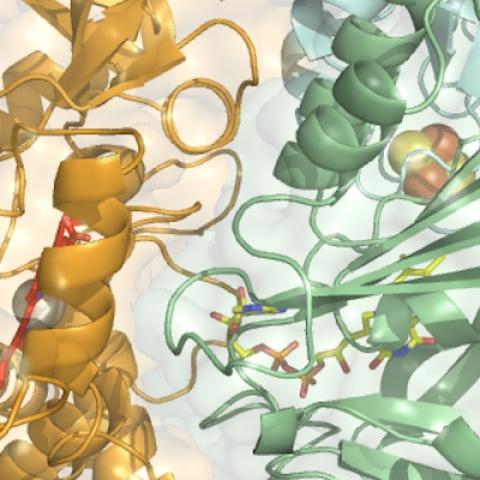
Our Biological Sciences research explores everything from how the diverse range of life on Earth has evolved over time, to the huge ecological consequences of human activity, and the growing threat posed by antibiotic resistance. And through our wide-ranging and collaborative research – across our three interconnected research groups – we're turning our expertise into action.
In our Biophysics and Molecular Genetics research group, home to the European Xenopus Resource Centre and the Centre for Enzyme Innovation, we’re researching the molecular basis of life, and applying our knowledge to address environmental and medical issues.
From microbes to plants and animals, the Ecology and Evolution research group is exploring the evolution of organisms and ecosystems by studying ecological interactions and genome changes.
Our researchers in the Marine Biology research group, based at the Institute of Marine Sciences, are at the forefront of international projects that address key environmental issues in the marine environments and advance our knowledge of biological processes in marine ecosystems.
We're involved in all five of the University’s research themes. Researchers in all three of our research areas contribute to the Sustainability and the Environment theme. Developmental geneticists in our Biophysics and Molecular Genetics research group investigate the genetic basis of disease in the Health and Wellbeing theme, while analysing the genetic material of archaeological samples contributes to the heritage focus in the Democratic Citizenship theme.
Interested in a PhD in Biological Sciences?
Explore our Biological Sciences postgraduate research degrees – including PhDs and MPhils.
Explore our research groups in Biological Sciences
Find out more about our research – and learn more about our recent projects, the academic and industrial partners with whom we collaborate, and the major funders who fund our work.
Ecology and Evolution Research Group
We're expanding knowledge of the diversity of the living world, from molecules to ecosystems, and creating a basis for assessing and reversing the extinction of species.

Biophysics and Molecular Genetics Research Group
We're studying biomolecules such as DNA, RNA and proteins to allow us to tackle issues such as disease, pollution and energy.

Marine Biology Research Group
We're researching key environmental issues in marine science such as climate change, biodiversity loss, habitat degradation and ocean acidification.

Our research centres
Much of our research takes place within the following cross-disciplinary centres – find out more below.
Institute of Life Sciences and Healthcare
Our multidisciplinary research environment supports the translation of science for societal benefit.

Centre for Enzyme Innovation
At the Centre for Enzyme Innovation, we are working to solve one of the most pressing environmental issues facing our planet.

Centre for Blue Governance
We're committed to the protection, restoration and sustainable governance of our aquatic environments

European Xenopus Resource Centre (EXRC)
Discover the world’s largest Xenopus research facility and access different Xenopus specific resources, including antibodies, wild-type strains, DNA resources and egg extracts.

